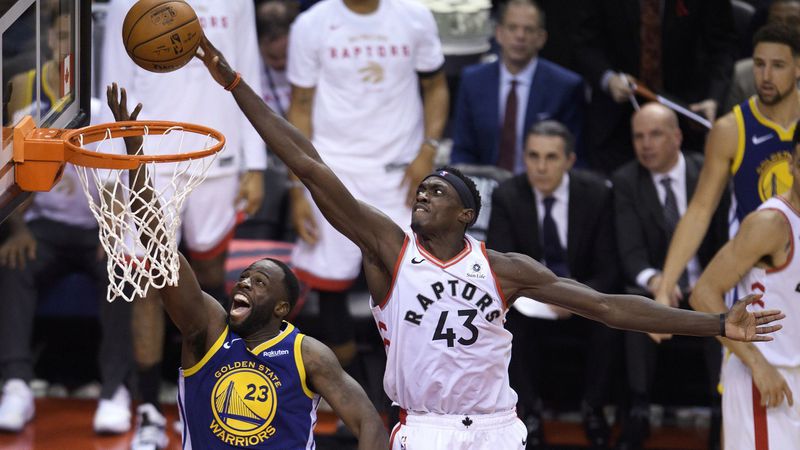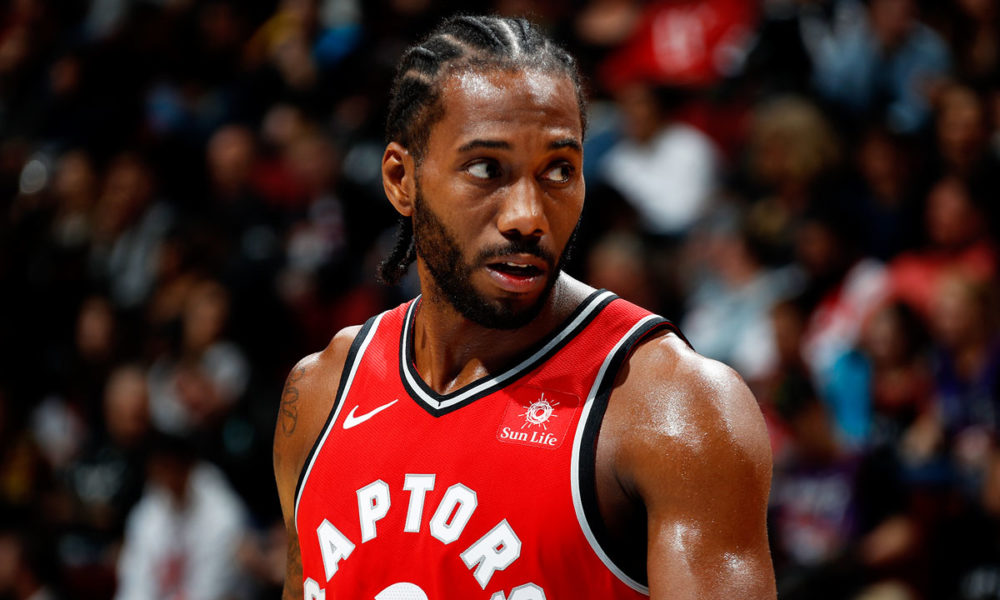It’s difficult to say when exactly the switch flipped for Pascal Siakam. It may’ve happened at some point last summer when he religiously attended Rico Hines’ pick up games at UCLA, garnering praise from some of the game’s elite. Or maybe it came when Siakam averaged a team-high 20.0 points, 4.3 rebounds, shot .724 (21-for-29) from the field and .983 (15-for-16) at the free throw line, earning Eastern Conference Player of the Week just three weeks into the season. Or, maybe it came during the January-February stretch when Siakam hit his first career game-winner against the Phoenix Suns and dropped a career-high 44 on the Washington Wizards en route to averaging 20 points per game for over a month straight. Regardless, all that matters is the switch has been flipped. Much like NBA fans went through initially with a young, gangly Giannis Antetekoumpo, the initial, awkward stage of Siakam’s career is over. And there’s no going back.
Now, I’m not saying Siakam is the next Giannis– no one is. I just wanted to give context to how dramatically Siakam’s theoretical ceiling has risen this past year. In this space last season, for my debut piece at RR, I wrote an extensive deep dive analyzing how Siakam was on track to possibly develop into a role player all-star akin to Draymond Green, only affecting the game in different ways (fewer assists, more rebounds, etc). That’s a gross underestimation now.
Sure, Siakam is three years older than Giannis was upon making his third-year leap, but keep in mind, despite being the same age (24) as his Greek-Nigerian competitor, Siakam started playing competitive basketball three years later. Remember how raw Giannis was three years ago? Clearly, if you think that Siakam is going to follow the prototypical NBA player improvement model where a player at 24 isn’t all that different from that same player at 27, you’re way off base. There’s first team all-NBA upside here.
So, how exactly did Siakam’s game improve this season? Well, the most obvious area is his jump shot. Once again, much like his freakish counterpart, Antetekoumpo, that elusive weapon was perpetually seen as the main obstacle in Siakam reaching his since-elevated ceiling. After shooting below 22% from three across his first two seasons, Siakam shocked many this year, leaping up to almost 37% despite doubling his volume. In particular, Siakam’s accuracy on threes classified as wide-open (ie. no defender within six feet)– which amass the vast majority of his attempts– jumped from 23% last season up to 38.5% this past year. Part of that improvement is certainly attributable to Siakam taking a greater proportion of his threes from the slightly-closer corner, but based on the smoothness of his release relative to its prior form and the fact that Siakam’s accuracy in the midrange also increased 11% this year, there’s no doubting Siakam improved immensely in this regard due to his rigorous work last offseason. Don’t expect that to change.
The other primary reason Siakam took a leap offensively this year is simply that of opportunity and freedom. As the old saying goes: “you’re only as good as your coach thinks you are”, and it was evidently clear from day one that Nick Nurse believed in his budding third-year forward. In addition to increasing his workload from a hair above 20 minutes a night to almost 32, Nurse empowered Siakam to freelance far more on offense. Per Synergy Sports tracking data, compared to 2017-18, Siakam spent 12% less of his possessions spotting up, instead replacing many of those possessions with post-ups, which quintupled (!) in frequency, and isolations, which increased almost 5%. All in all, that change from camping out as a tertiary option less often to diversifying his offensive attack, helped his usage rate also rise nearly 5%. Surely, Siakam’s improvement over the summer increased his readiness for this more burdensome offensive role, but the freedom and confidence the coaching staff gave him undoubtedly accelerated that growth.
Despite all the fanfare Siakam’s leap on offense has garnered, the crazy part is he may’ve improved even more on the defensive side of the ball. Per Synergy Sports, compared to last season, where Siakam finished in the 31st percentile relative to the rest of the league for individual points per possession on defense, Siakam leaped up to the 89th percentile this past year. In particular, Siakam jumped from barely league average– if not below– to above the 70th percentile in ‘spot-up’, ‘pick-and-roll ball-handler’, ‘pick-and-roll ball-handler (big defender)’ and ‘isolation’ play types. The sheer variety of the play types with which he’s borderline elite at defending shows the versatility that drew Draymond Green comparisons in the first place. With slightly more reps and a greater proportion of his minutes at center (they increased from 1% of his minutes last season to 9% this year), future all-defensive team nods seem all but certain for Siakam.
The one area of concern from this past year is Siakam’s plateau as a playmaker. Despite increasing his role dramatically, Siakam’s assist percentage stayed essentially the same as last year and his assist-to-usage ratio fell from the 85th percentile to the 72nd. Considering many dreamed of Siakam emerging into ‘point-Pascal’ based his promising rate last year– adding even more fire to the Draymond Green comparison– that’s a troubling development. Still, improvement is rarely linear. Based on how many areas Siakam improved in this past year, it’s tough to blame the guy for marginally declining in just one. However, if Siakam is ever going to reach the heights that now seem plausible for him, his playmaking is something to monitor going forward.
So, where does Siakam’s jump to arguably a top-25 player leave him and the Raptors’ organization going into extension talks this summer? Well, considering Jamal Murray and Ben Simmons each garnered the max this past week and Siakam is a more complete two-way player than either with a net rating double and quadruple theirs, respectively, it’s only logical the Raptors offer the same. Siakam’s come a long way from being a head-scratching reach in the first round, and it’s still only the beginning.



